Train Spotting - All Aboard: The Beginner's Hobby Guide
The Ultimate Guide to Train Spotting: Tips, Techniques, and Trivia
Train spotting is a fascinating hobby that involves observing and documenting trains. Whether you're an avid fan or a curious beginner, this ultimate guide has everything you need to know to get started. First, you need to choose the right location for train spotting.
Look for busy terminals, stations, or tracks where trains pass by frequently. You can also try exploring hidden gems such as abandoned railways or scenic routes. Once you've found your spot, equip yourself with the right tools such as binoculars, cameras, and a notebook to document your sightings.
To make the most out of your train spotting experience, it's important to know some basic techniques. For instance, timing is crucial. Trains often run on schedules, so be sure to check the timetable and plan your visit accordingly. Also, pay attention to the details such as train numbers, types, and destinations. This information can help you identify the trains and even predict their movements.
Aside from the technical aspects, train spotting also offers interesting trivia and history. Did you know that the first steam-powered locomotive was invented in 1804 by Richard Trevithick? Or that the world's fastest train is the Shanghai Maglev with a speed of 267 miles per hour? By learning about the fascinating facts and stories behind trains, you can enrich your train spotting experience and appreciate the significance of this mode of transportation.
In conclusion, train spotting is a rewarding hobby that combines observation, knowledge, and passion. With the tips, techniques, and trivia in this ultimate guide, you can embark on your train spotting journey with confidence and excitement.

How to Get Started with Train Spotting: A Beginner's Guide
Are you new to train spotting and wondering where to begin? As an experienced trainspotter, I can tell you that this hobby is not just about trains, but about discovering new places, meeting new people, and learning about history and technology.
To get started, the first thing you need to do is find a good location. Look for a spot with plenty of train traffic, such as a busy railway station or a popular rail line. Once you've found your spot, take a seat and get comfortable. Bring along some snacks, drinks, and a notebook to record your observations.
Now, let's talk about the gear. You don't need a lot of expensive equipment to start train spotting. All you need is a good pair of binoculars or a camera with a zoom lens to capture the details. You can also use a smartphone camera to take photos or videos. Make sure you have a clear view of the trains and avoid any obstructions such as trees or buildings.
Timing is also important in train spotting. Trains run on schedules, so check the timetables before your visit. You can also use apps or websites that track train movements and provide real-time updates. Don't be afraid to ask fellow train enthusiasts for advice or information. Train spotting is a community-based hobby, and there's always something new to learn from other spotters.
Finally, have fun and enjoy the experience. Train spotting is a relaxing and rewarding hobby that allows you to explore the world of trains and travel. You'll be amazed by the different types of trains, the sounds they make, and the people who ride them. So pack your bag, grab your gear, and get ready for an adventure. Train spotting awaits you!
The Best Locations for Train Spotting: From Busy Terminals to Hidden Gems
As a seasoned trainspotter based in the UK, I can tell you that Europe offers some of the best locations for train spotting in the world. Whether you're looking for busy terminals or hidden gems, there are plenty of great spots to explore.
One of the best locations for train spotting in the UK is the famous East Coast Main Line. Stretching from London to Edinburgh, this route offers a diverse range of trains, from high-speed intercity trains to classic diesel locomotives. The line passes through beautiful countryside and historic cities, providing a stunning backdrop for your train spotting adventures.
If you're looking for something more unique, head to the Settle-Carlisle Railway. This scenic railway line passes through the Yorkshire Dales and the North Pennines, offering breathtaking views of the landscape. The line is also home to the famous Ribblehead Viaduct, a must-see for any train enthusiast.

For those looking to explore Europe, Switzerland offers some of the best train spotting locations on the continent. The Bernina Express is a popular tourist train that crosses the Swiss Alps, offering stunning views of the mountains and valleys. The Glacier Express is another scenic train that travels from Zermatt to St. Moritz, passing through picturesque villages and stunning landscapes.

If you're looking for something more off the beaten track, head to the Harz Narrow Gauge Railway in Germany. This historic railway line is over 100 years old and offers a glimpse into the past. The line passes through the beautiful Harz Mountains, providing an unforgettable train spotting experience.

Lastly, don't forget about your local train station or railway line. Even if it's not a popular spot, there's still a chance to spot some interesting trains and meet fellow enthusiasts. You never know what you might find in your own backyard.
In conclusion, the UK and Europe offer some of the best locations for train spotting in the world. From the famous East Coast Main Line to hidden gems like the Settle-Carlisle Railway, there's something for everyone. So pack your bags, grab your gear, and get ready for an unforgettable train spotting adventure.
Train Spotting Tools and Equipment: Binoculars, Cameras, and More
Binoculars
Binoculars are an essential tool for any train spotter. They allow you to get a closer look at trains, even from a distance. When choosing binoculars, there are a few things to consider, such as magnification power, field of view, and weight.
- Magnification power: The magnification power of binoculars is measured in times. For example, 10x binoculars will magnify objects 10 times their actual size. The amount of magnification you need will depend on how far away you typically are from the trains you are spotting.
- Field of view: The field of view is the area that you can see through the binoculars at one time. A wider field of view will allow you to see more of the train at once, which can be helpful for identification purposes.
- Weight: Binoculars can be heavy, so it is important to choose a pair that is lightweight enough to be comfortable to carry around.
Some recommended binoculars for train spotting:
- Vortex Diamondback HD Binoculars: These binoculars offer excellent magnification power and image quality, making them a great choice for train spotting. They also have a wide field of view and are lightweight and easy to carry.
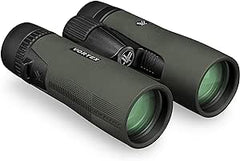
Experience the world with unprecedented clarity and precision! Elevate your outdoor adventures with Vortex Optics Diamondback HD Binoculars. Discover every detail with exceptional HD optics. Don't miss out, grab yours now on Amazon: Check them out here!
- Bushnell Legend Ultra HD Binoculars: These binoculars offer similar features to the Vortex Diamondback HD Binoculars, but they are slightly less expensive.
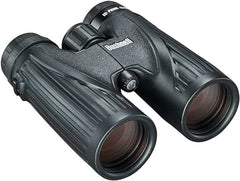
Unlock a new level of clarity and precision in your outdoor adventures! Experience nature like never before with Bushnell Legend Ultra HD Binoculars. Explore every detail with stunning HD optics. Don't wait, enhance your view today on Amazon: Check them out here!
- Nikon Monarch 5 Binoculars: These binoculars are a bit more expensive than the Vortex Diamondback HD Binoculars and the Bushnell Legend Ultra HD Binoculars, but they offer even better image quality.

Discover the world in unparalleled clarity and precision with Nikon Monarch 5 Binoculars! Elevate your outdoor experiences with superior optics and rugged durability. Don't settle for anything less than perfection, get your Nikon Monarch 5 Binoculars now on Amazon: Explore them here!
Cameras
A camera is another essential tool for any train spotter. It allows you to capture images of trains that you can share with others or keep as a record of your train spotting adventures. When choosing a camera, there are a few things to consider, such as image quality, zoom capability, and portability.
- Image quality: The image quality of a camera is measured in megapixels. The more megapixels a camera has, the higher the quality of the images it can capture.
- Zoom capability: The zoom capability of a camera is measured in optical zoom and digital zoom. Optical zoom is the zoom that is built into the camera lens. Digital zoom is the zoom that is created by cropping the image and then enlarging it.
- Portability: Cameras can be bulky and heavy, so it is important to choose a camera that is lightweight and easy to carry around.
Some recommended cameras for train spotting:
- Nikon D3500 DSLR Camera: This camera offers excellent image quality and a variety of zoom options. It is also relatively lightweight and portable.
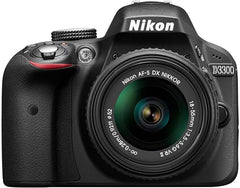
Capture life's precious moments with stunning clarity and detail using the Nikon D3500 DSLR Camera! Unleash your creativity and elevate your photography skills with this powerful yet user-friendly camera. Don't miss out on creating memories that last a lifetime, grab your Nikon D3500 now on Amazon: Get yours here
-
Canon EOS 2000D DSLR Camera and EF-S 18-55 mm f/3.5-5.6 IS II Lens - Black
: This camera is a good option for budget-minded train spotters. It offers good image quality and a variety of zoom options.
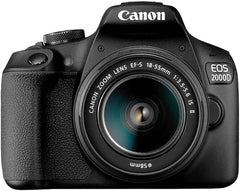
Step into the world of photography and unleash your creativity with the Canon EOS 2000D DSLR Camera paired with the versatile EF-S 18-55mm f/3.5-5.6 IS II Lens in sleek black! Capture breathtaking moments with precision and clarity. Elevate your photography game today - get your Canon EOS 2000D DSLR Camera now on Amazon: Check it out here!
-
Sony Alpha 6400 | APS-C Mirrorless Camera with Sony 16-50 mm f/3.5-5.6 Power Zoom Lens
This camera is a good option for train spotters who want a camera that is lightweight and easy to carry around. It offers good image quality and a variety of zoom options.
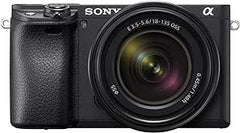
Unlock your creativity and capture the world in stunning detail with the Sony Alpha 6400 APS-C Mirrorless Camera paired with the versatile Sony 16-50mm f/3.5-5.6 Power Zoom Lens! Experience the power of exceptional image quality and high-speed performance. Elevate your photography and videography game now - get your Sony Alpha 6400 on Amazon: Explore it here
Other Equipment
In addition to binoculars and cameras, there are a few other pieces of equipment that can be helpful for train spotting. These include:
- A notebook and pen: A notebook and pen are essential for taking notes about the trains you spot. This information can be helpful for future reference or for sharing with others.
- A tripod: A tripod can be helpful for taking steady photos of trains.
- A train identification guide: A train identification guide can help you identify the trains you see.
- A first-aid kit: A first-aid kit is always a good idea to have on hand, just in case of an accident.
Conclusion
These are just a few of the tools and equipment that can be helpful for train spotting. The specific equipment you need will depend on your individual needs and preferences. With the right equipment, you can make your train spotting adventures more enjoyable and productive.
The History and Evolution of Train Spotting: From Steam Engines to High-Speed Trains
Train spotting has been around for over a century, and it's come a long way since the days of steam engines and pocket watches. Back in the early 1900s, train spotting was seen as a nerdy pastime for train enthusiasts who had nothing better to do with their time. But as the rail industry evolved and new technologies emerged, so did the hobby of train spotting.
In the 1920s and 30s, trainspotters would often use binoculars to get a better view of the trains, and would jot down the details in their trusty notebooks. By the 1950s, cameras had become more common, and trainspotters were able to capture images of the trains they saw. In the 1970s and 80s, train spotting became more popular, with enthusiasts traveling far and wide to spot rare and exotic trains.
Today, train spotting has evolved yet again, with the advent of high-speed trains and modern technology. Enthusiasts can now use apps and websites to track trains in real-time, and can even view live streams of trains passing through stations. And while some may still see train spotting as a nerdy pastime, it's clear that it's come a long way since the days of pocket watches and binoculars.
So there you have it - a brief history of train spotting, from its humble beginnings to the modern era of high-speed trains and live streaming. Who knows where the hobby will go next? Maybe one day we'll be able to spot trains from our flying cars!
Discover the ultimate train spotting journal review at J&PHats Train Spotting Journal Review. Don't miss out – click the link and dive into the world of train spotting today
Train Spotting Etiquette: Dos and Don'ts for a Safe and Enjoyable Experience
Train spotting is a popular hobby that can be enjoyed by people of all ages. However, it is important to be aware of train spotting etiquette in order to have a safe and enjoyable experience.
Dos:
- Be respectful of railway property. Do not trespass on railroad property or interfere with train operations.
- Be aware of your surroundings. Watch out for trains and other hazards when you are train spotting.
- Be courteous to other train spotters. Share your knowledge and enthusiasm with others, but be respectful of their privacy.
- Leave no trace. Take your trash with you and do not damage the environment.
Don'ts:
- Do not climb on trains. This is dangerous and illegal.
- Do not take pictures or videos of trains without permission. This may be a violation of privacy or copyright laws.
- Do not interfere with train operations. This could cause a serious accident.
- Do not litter. Take your trash with you and dispose of it properly.
- Do not damage railway property. This is illegal and could cause a serious accident.
By following these simple dos and don'ts, you can help to ensure that everyone has a safe and enjoyable train spotting experience.
Here are some additional tips for train spotting:
- Do your research. Learn about the different types of trains that you might see, as well as the history of the railroad industry.
- Be patient. Train spotting can be a waiting game, so be prepared to spend some time at your chosen spot.
- Be prepared for the weather. Train spotting can be done in any weather, but be sure to dress appropriately.
- Have fun! Train spotting is a great way to learn about history, technology, and the environment. So get out there and start spotting some trains!
The Thrill of Train Spotting: Why This Hobby Continues to Fascinate People Worldwide
If you're looking for a hobby that combines history, technology, and adventure, then train spotting might be just the thing for you. There's something truly thrilling about seeing a massive locomotive thundering down the tracks, or spotting a rare and exotic train that you've never seen before. And with the advent of modern technology, there's never been a better time to start train spotting.
Whether you're a history buff or a tech enthusiast, there's something for everyone in this hobby. You can learn about the rich history of the rail industry, from the early days of steam engines to the modern era of high-speed trains. You can also explore the latest technologies, from train tracking apps to live streaming cameras.
But perhaps the best part of train spotting is the adventure. There's no telling where your hobby might take you - you could find yourself exploring hidden gems in your own backyard, or traveling to far-off lands in search of rare and exotic trains. And along the way, you'll meet like-minded enthusiasts who share your passion for trains and the rail industry.
So if you're looking for a hobby that's exciting, educational, and endlessly fascinating, then give train spotting a try. You might be surprised at just how much fun you can have watching trains go by!

Discover the ultimate train spotting journal review at J&PHats Train Spotting Journal Review. Don't miss out – click the link and dive into the world of train spotting today
Frequently Asked Questions about Trainspotting
What does Trainspotting mean in British slang?
In British slang, Trainspotting refers to the hobby of watching and photographing trains.
How long is Trainspotting?
The 1996 film Trainspotting is 94 minutes long. The 2017 sequel, T2 Trainspotting, is 117 minutes long.
Is Trainspotting disturbing?
Trainspotting is a dark and gritty film that deals with some disturbing subject matter, including drug addiction, violence, and sex. It is not a film for everyone.
What do train spotters look for?
Train spotters look for a variety of things, including the type of train, the number of carriages, the destination, and the locomotive. They may also be interested in the train's history or its technical specifications.
Is Trainspotting triggering?
Trainspotting may be triggering for people who have experienced drug addiction, violence, or sex abuse. It is important to be aware of the film's content before watching it.
What are the 10 things to choose in Trainspotting?
Here are 10 things to choose in Trainspotting: * A train to spot * A camera to take pictures with * A notebook to take notes in * A comfortable place to sit or stand * A hat or sunglasses to protect yourself from the sun * A drink to stay hydrated * A snack to keep you energized * A map of the area so you can plan your route * A first-aid kit in case of an emergency * A positive attitude and a willingness to have fun!
How many Trainspotters are there in the UK?
There are an estimated 20,000 train spotters in the UK.
Is Trainspotting OK for kids?
Trainspotting is not recommended for children under the age of 15. The film contains strong language, violence, and drug use.
What are the first things to choose in Trainspotting?
The first things to choose in Trainspotting are a train to spot and a camera to take pictures with. Once you have those two things, you can start planning your route and looking for a comfortable place to sit or stand.
What are the best places to train spot in the UK?
Here are some of the best places to train spot in the UK: * London Euston Station * King's Cross St. Pancras Station * Liverpool Street Station * Manchester Piccadilly Station * Edinburgh Waverley Station * Glasgow Central Station * Cardiff Central Station * Bristol Temple Meads Station * Birmingham New Street Station * Leeds City Station These stations are all located on major rail lines and offer a variety of trains to spot, from high-speed intercity trains to local commuter trains.
What are the different types of trains that can be spotted in the UK?
There are a variety of different types of trains that can be spotted in the UK, including: * High-speed intercity trains * Local commuter trains * Freight trains * Heritage trains * Tourist trains Trains in the UK come in a variety of colors, sizes, and shapes, so there is something for everyone to enjoy.
What are the best times of year to train spot in the UK?
The best times of year to train spot in the UK are: * Spring (March-May) * Summer (June-August) * Autumn (September-November) These times of year offer mild weather and good visibility, making it ideal for train spotting.
What are the best camera settings for train spotting?
The best camera settings for train spotting are: * **Aperture:** Set the aperture to a low f-stop number, such as f/2.8 or f/4. This will allow more light into the camera, which is important for taking sharp photos of moving trains. * **Shutter speed:** Set the shutter speed to a fast speed, such as 1/1000th of a second or faster. This will freeze the motion of the train, preventing it from appearing blurry in your photos. * **ISO:** Set the ISO to a high setting, such as 1600 or 3200. This will increase the sensitivity of the camera's sensor, allowing you to take photos in low-light conditions. It is also important to use a tripod to keep your camera steady. This will help to prevent your photos from being blurry due to camera shake.
What are some tips for train spotting safely?
Here are some tips for train spotting safely: * **Always be aware of your surroundings.** Trains can be very dangerous, so it is important to be aware of your surroundings at all times. * **Never stand on the tracks.** The tracks are electrified and can be deadly. * **Never cross the tracks in front of a train.** Trains can't stop quickly, so it is important to cross the tracks at a designated crossing. * **Wear bright clothing so that you are visible to trains.** * **Be respectful of train crews and other train spotters.**
Explore the World of Hats with J&P Hats! 🎩
Looking to elevate your hat game? Look no further! Discover a treasure trove of hat wisdom in our latest blogs:
-
🧢 "When To Remove Your Hat: Hat Etiquette - The Ultimate Guide" - Uncover the secrets of hat etiquette and refine your style. Read more
-
👒 "What Hat to Wear with a Maxi Dress: Maximize Your Style" - Elevate your fashion quotient with the perfect hat for your maxi dress. Read more
-
🎩 "Choosing the Perfect Hat for a Suit: Expert Advice for Active Hat Wearers" - Find the ideal hat to complement your suit and make a statement. Read more
-
👓 "Choosing the Perfect Hat for Glasses: Expert Advice for Active Hat Wearers" - Frame your face with the perfect hat to match your glasses. Read more
-
💇♀️ "Choosing the Perfect Hat for Short Hair: A Guide for Active Hat Wearers" - Rock your short hair with confidence and style using the right hat. Read more

